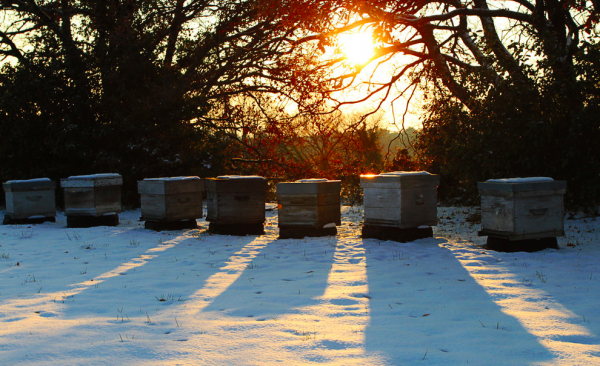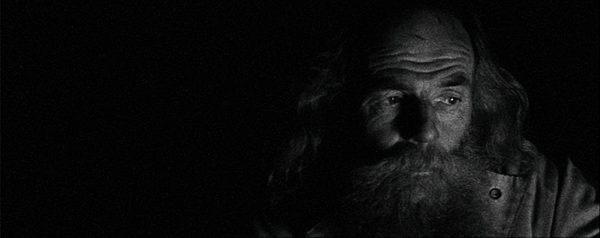Begin with a man on the beach. The sea is strangely iridescent, lighter in its lights and blacker in shadow than it seems as if it could be. As for the sand, it’s plausibly sandy, but on the fine end, like a powder, and so pale that it’s only just possible to say that it isn’t white. But as the man walks along, with the ocean to his left and the salty black hills far away ahead of him, the powdery sand imperceptibly changes to coarser sand, and the coarser sand to tiny pebbles, and the tiny pebbles to larger pebbles, and then, all the way north by the feet of the hills, where the sky is black, too, where you can see deep into its emptiness, the man, abashed, looks down and notices that he is standing on perfectly smooth round stones.
Most of the stones are difficult, beautiful colours, profound shades of indigo that hover at the very threshold of the eye’s ability to distinguish. Some of them are elegant greys, with edges as hard to make out as a thin cloud in the early dawn. Here and there are a few clear yellows, an occasional newt red, and one or two of gold. And one—one in particular that sits about eighteen inches from the toe of the man’s left boot—is a violet so deep and otherworldly that simply seeing it could make you gasp. To really look at it would surely make your eyes tear.
The man’s eyes tear. He bends from the waist like a dancer or, it might be more precise to say, like an adjustable floor lamp with only one joint. The violet stone isn’t simply beautiful. It has a shape of uneasy perfection and a glassy, reflective finish, as if someone had varnished it. But mere beauty is cheap. What makes the stone important is that its colour can’t be remembered.
The man tests himself against the stone, or the stone against himself. He holds it close in front of his nose against different backgrounds: the other stones; the mountains; the deep black sky; the sea. He looks at it and looks away; he looks at it and shuts his eyes; he winks and blinks. But he cannot hold the colour in his memory for even an instant. Maybe, he thinks, the colour doesn’t leave the stone at all; when he thinks he’s looking at the colour, it’s the colour that’s looking at him.
The problem is that his pockets can’t be trusted. They’re large enough, but they’ve been ripped at the seams and shredded. Under his coat he has a breast pocket, but the breast pocket has a pebble-sized hole in the bottom, which is an even worse condition for a pocket than being shredded because it could lead to false confidence. His pants are not worth going into. The man looks over his shoulder. There’s only one choice.
He starts with the violet stone under his tongue. Then he picks up one of the indigos, just as an example, since they seem to be the most common, and a second indigo to exemplify the range of their indigo variation; and two of the greys, one greyer than white, one whiter than grey, because there’s no way to choose between them; and naturally the gold stone. He crams in a green stone, another gold stone he’s uncovered, a tiny orange stone, a long brown stone, and an indigo much darker than his first two. And then he notices, right by the toe of his right boot, a stone whose lavender colour makes all the other colours look flat and dead. Its lavender is the synthesis and summation of every other colour on the beach, their justification and their answer; but the answer, the man reflects, only makes sense if you’ve already asked the question. His mouth is full. There’s only one choice.
The first few hurt going down, but the pain, once established, is steady and overwhelming and therefore unaffected by the subsequent stones. About halfway through the mouthful, his throat goes numb; the pain, detached, hovers over his breastbone. And then, all at once, his mouth is empty, the pain is slightly less, and only his stomach feels strange. He notices a yellowish-grey colour he hadn’t seen before. The pebbles, it turns out—he feels a bit foolish for not having guessed this—are much easier to swallow one at a time.
There’s a bright purple stone, like a Japanese pickled eggplant, astringent and crisp; a deep brown stone, like a stained wooden bathtub in a clearing in a pine forest; and then a bright orange stone, so alert and alive in its colour that he could almost worry it might jump out of his palm before he gets it in his mouth. He may already have had an orange but it’s getting difficult to keep track. Then two more greens, and a magisterial blue like fountain pen ink, and another indigo, sort of as a palate cleanser, and two stinging violets, and a greenish-grey, and two more gold—they were sitting right next to each other—and then a white one, chalky white, which is only really beautiful in the context of the others, but it is. He finds it easier to sit down. His collection, he decides, should reflect the proportions of the beach, it should be the beach in microcosm, in fact, and he starts to take whole handfuls at a time. He finds it difficult to sit up. His stomach goes numb. The pain hovers over his crotch. Blood drips down his fingers as he crams the stones past his recalcitrant jaw, but good—the blood will lubricate. There is an indigo stone so black that it might truly be black, a vacuum of light like the sky. One more won’t make any difference.




